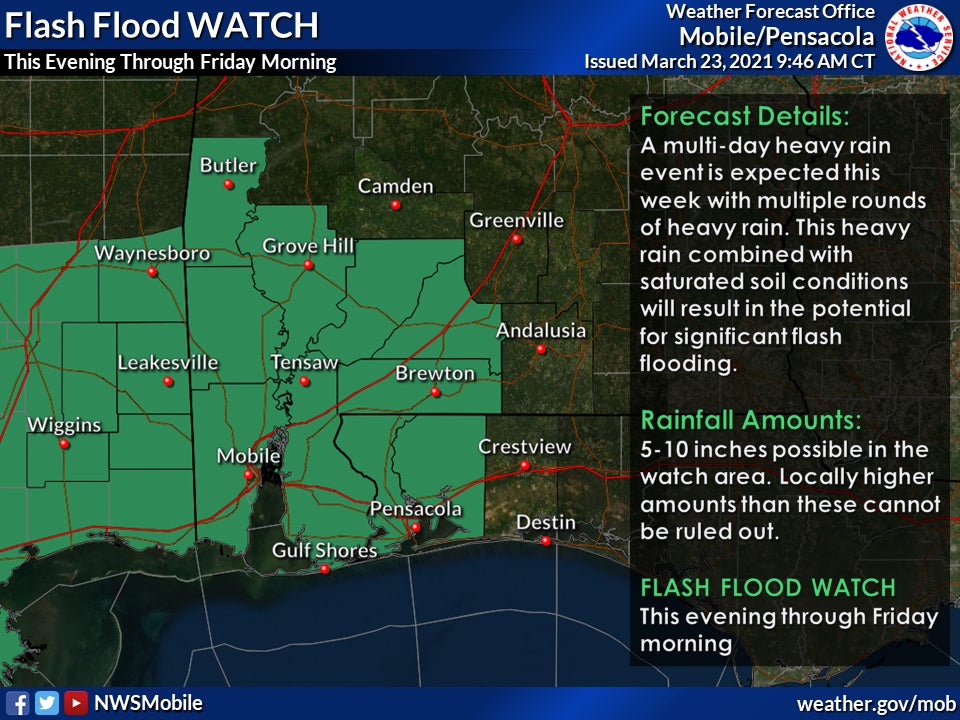Sales tax increase may not be long-term solution
Published 9:03 am Thursday, February 13, 2003
By By PAUL KEANE – Special to The Standard
(Editor's Note: This is the fourth in a six-part series looking at the funding crisis facing public schools in Escambia County. Today, a look at increasing the sales tax in the county.)
An additional one-cent sales tax in Escambia County could raise $2.7 million per year for education, but officials with the Escambia County Board of Education don't feel that it would be a permanent solution to the funding woes facing the system at this time.
Escambia County Superintendent of Schools Melvin "Buck" Powell said a sales tax increase would not be a long-term solution and that it would hurt many of the people who could least afford it.
Atmore Mayor Howard Shell, who along with the Atmore City Council recently rescinded a portion of its city sales tax that was going to education, agrees, adding that a sales tax might actually have an opposite effect.
Businesses in the area tend to agree, with many merchants being leery of a sales tax increase. Especially in areas such as Atmore -- where the Florida state line is within walking distance for many people and Bay Minette with its Wal-Mart Supercenter is just 20 minutes away -- an increase in sales tax could be detrimental.
Many merchants fear that an increase in sales tax would push more consumers across the state line, where there is no sales tax on grocery items and to Bay Minette and other areas where the taxes would be lower.
County Administrator Tony Sanks said he has heard thoughts along those lines, but that he doesn't see where the savings are.
A one-cent sales tax in the county would generate $2.7 million, according to figures provided by Sanks. $2,085,210, or about 77 percent, would go to the Escambia County School System while $614,790, or 23 percent, would go to the Brewton City School District.
An increase in ad valorem taxes for education would provide various amounts of funding, depending upon the increase in millage. At 10 mills, the amount would be $2,456,647.20, with $1,897,362.23 going to Escambia County and $559,284.97 going to Brewton.
The irony is that increasing the sales tax may or may not help the schools, as funding would fluctuate according to the whims, and purchases, of consumers in the county.
State funding for schools depends heavily on sales tax revenue and officials say that is one of the reasons for three years of proration. As the economy has slumped and consumer spending decreased, the amount of revenue generated as slipped, causing the state to cut back on funding for school districts. State School Superintendent Ed Richardson announced in late January that schools could expect at least a 5 percent cut in funding for next school year. For Escambia County, that amounts to nearly $1 million a year.
On the local front, this point was brought home very clearly last month in Atmore. When Kmart announced it was closing the local store on March 21, the City of Atmore began staring a more than 10 percent shortfall in city sales tax revenue. Shell and the city council immediately began making cuts to cover the losses, including cutting many stipends to groups such as the chamber of commerce and cutting the percentage of sales tax revenue going to the schools. That amounts to more than $250,000 a year given to the schools annually.
Any lack of funding has to be made up with local funding, mainly out of reserve funds. Once those are depleted, a school district must either find new revenue streams, borrow against its assets or begin cutting personnel and programs.
Escambia County will deplete its reserves sometime this year, and the prospect of borrowing against assets is a very real one.
While a property tax would provide level funding -- allowing the school district to know each year exactly what kind of local funding it would receive since property taxes remain stable -- a sales tax increase could be used to bridge the gap between now and 2004, the first time the school district would realize any revenue from a property tax increase.
For that to happen, the board of education would have to ask the county commission to pass a sales tax, whether it be a permanent or a temporary one. If a majority of the commission votes to pass the measure, then it would take effect on the first day of the month after that vote.
The commission next meets on Feb. 24. The school board meets right before then to pass a formal resolution requesting that the county commission take some type of action, although whether that would be a property tax, sales tax or a combination of both has not been decided. The commission could take action on a BOE request at any point after the resolution is passed, but Sanks said the most likely scenario would be to take action no earlier than the March 10 meeting.
Sanks did say that counties and municipalities can increase sales tax to a point where it might harm local businesses, thereby harming sales tax revenues.
(Next: A combination of sales tax and property taxes. What would that do for the school district and communities in the county?)




